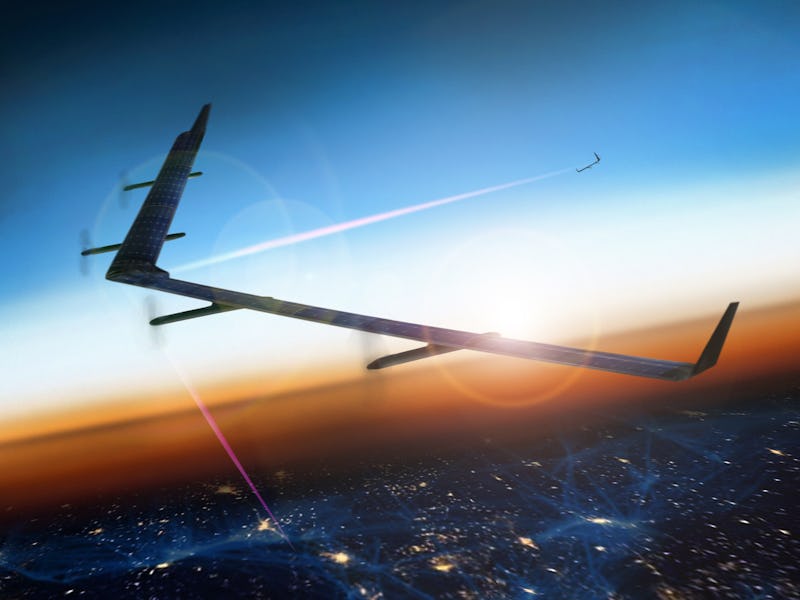The Drone That Never Lands is the Drone of the Future
University of Minnesota roboticist: Seeing a drone that never lands "not out of the question."

With a flight time of just under 5 days, the fixed-wing, sun-powered Solar Impulse holds a world record for the longest consecutive flight time. Setting that record required two human pilots and a lot of solar paneling. But what if you took the humans out of the equation, added a controller, and doubled down on the panels. Forget a weeklong flight — could we see an aircraft that was never forced to land? In theory, sure, but as it stands now an hour-long quadcopter flight is an achievement. Our engineering will have to improve for floating infrastructure to become a real possibility..
Solar your power and fix your wings.
What rotocraft — your DJI Phantoms and Parrot Bebop drones — offer in agility they lack in endurance. For the long haul, you’re going to want to ditch the copter qualities and keep wings straight. “The fixed wing is the low-hanging fruit at this point,” says Nikolaos Papanikolopoulos, a University of Minnesota roboticist who, along with a team of savvy undergraduates, is developing small drones capable of sustained flight.
In his eyes, the appeal of solar is twofold: No pause to recharge or refuel, and room for the more interesting mechanical guts. “We want to have continuous operation,” he says. “The paradox here is if we put more batteries on board, it means that more sensors need to be taken out.” He worries about weight. The size of the drones means fit in the bed of a Minnesotan pickup truck, with an ideal wingspan of 5 meters or less. This makes it a relatively tiny fixed-wing drone — Google’s solar drone, in comparison, is massive.
Papanikolopoulos and crew were able to construct a 4-meter drone capable of capturing more than three times the amount of energy needed for continuous level flight, as they outline in a paper presented at a Hamburg, Germany, robotics conference in October. They know it can fly for several hours — “we can demonstrate a 24 hours flight in the near future,” Papanikolopoulos says. The trick is making sure the components are functional.
To tether, or not to tether?
If you don’t mind staying in one place perpetual flight is, essentially, already here. The drone company CyPhy Works’ latest copter, a drone called Parc, hovers in the air as long as you want it to, which theoretically could be forever. At a conference earlier this fall, CyPhy founder Helen Greiner described Parc as “basically a robot with unlimited time-of-flight,” the MIT Technology Review reports.“You send it up and it stays there.” The engineer behind the curtain? A tether that transmits energy to the drone and data from it.
A line to the ground isn’t quite the cure-all the industry is looking for, however. “To be honest, I don’t like tethers,” Papanikolopoulos says. “I like things that are free to move in a reliable, safe, and effective way. I don’t want to diminish the work of others, it’s just I have a lot of experience with robots in tethers. They can be effective for the first 10 or 20 meters. Once you hit the end of the tether, the robot has, of course, no where else to go.
If what goes up never comes down.
Will we see drones that never need to land? “Yes, I believe so,” Papanikolopoulos says. “Something like that is not out of the question.” There are plenty of applications for perpetually-flying machines. CyPhy Works mentions surveillance, and Facebook and Google espouse the virtues of communication drones spewing internet access to the masses below, but these aren’t the only applications.